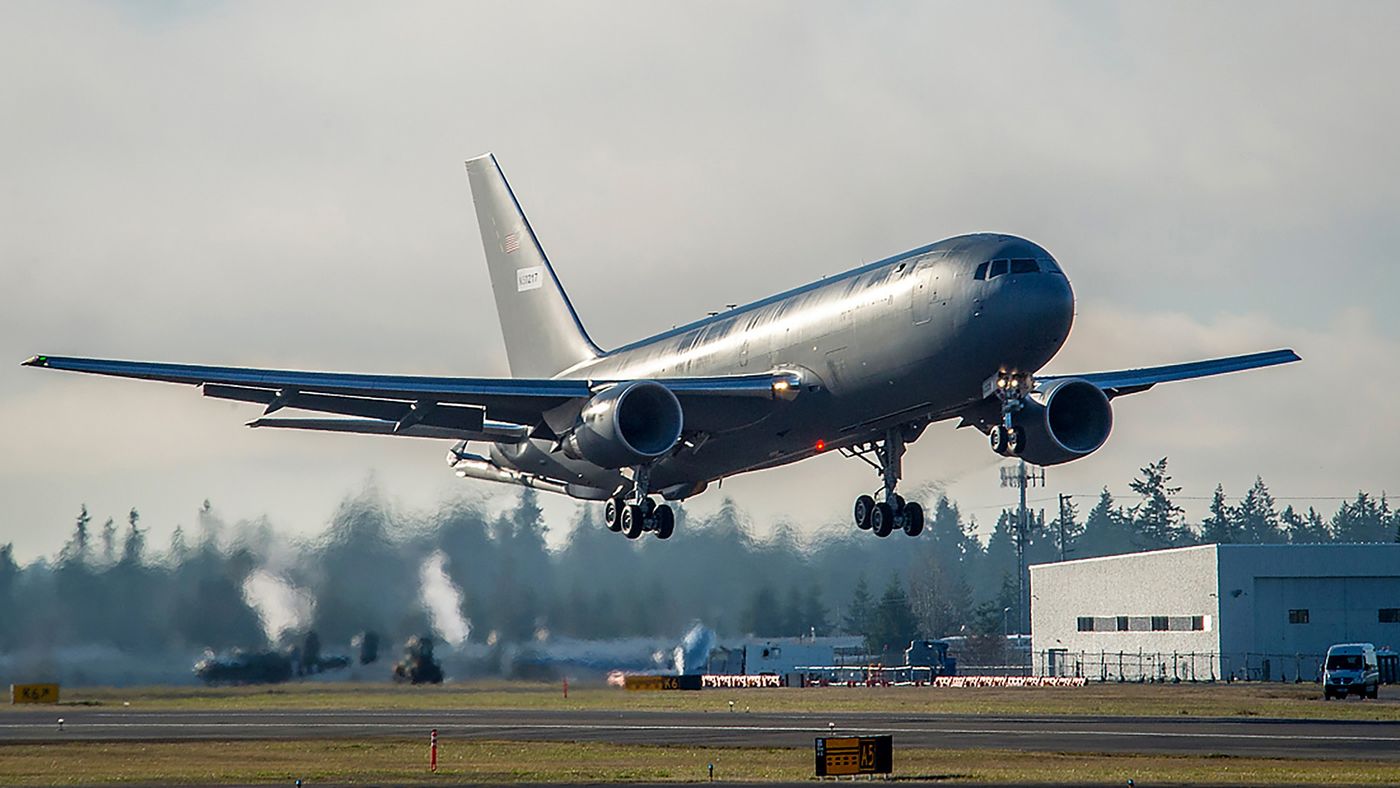
By Debbie Gregory.
Despite the government’s lack of confidence in Boeing’s ability to deliver the KC-46 Pegasus military aerial refueling aircraft, Boeing has forecast delivery of 18 units by year’s end.
“Boeing has been overly optimistic in all of their scheduled reports,” Air Force Secretary Heather Wilson told the House Armed Services Committee. “One of our frustrations with Boeing is that they’re much more focused on their commercial activity than they are on getting this right for the Air Force.”
Boeing’s design was seen as relatively low risk as the tanker bid was based on a modified commercial 767 passenger jet. But delivery of the first KC-46 aircraft is expected to be more than a year late.
Boeing has 34 tankers in various phases of completion.
Before delivery can be made, Boeing must conduct flight tests to certify that:
- The F-16 fighter and the C-17 transport jet are capable of receiving fuel from the tanker under all conditions;
- The new tanker can be refueled by the older KC-135 tanker; and
- The newly developed fix for the camera systems is operational.
The price tag for the development and production of 179 tankers is estimated to be $41 billion.
In the international marketplace, the delays gave an advantage to the KC-46’s competition, the Airbus A330 Multi Role Tanker Transport. But the USAF had awarded the development contract to Boeing which, at the time, was declared “the clear winner” under a formula that considered the bid prices, how well each of the planes met war-fighting needs and what it would cost to operate them over 40 years
The tanker features a new advanced refueling boom that extends 58 feet out from the rear of the aircraft, a rigid pipe with wings sprouting either side to make it maneuverable.
In contrast to the older KC-135 tankers currently in use by the Air Force today, the KC-46 the operator sits at a computer station behind the tanker’s cockpit instead of laying prone on their belly at the rear of the plane. The cameras provide the visuals rather than the operator having to look out a window at the receiving aircraft.
“When you are flying and fighting at night, the capabilities of the cameras are a game-changer,” said Sean Martin, the KC-46 chief boom operator. “On this airplane, it’s the same as daytime.”







